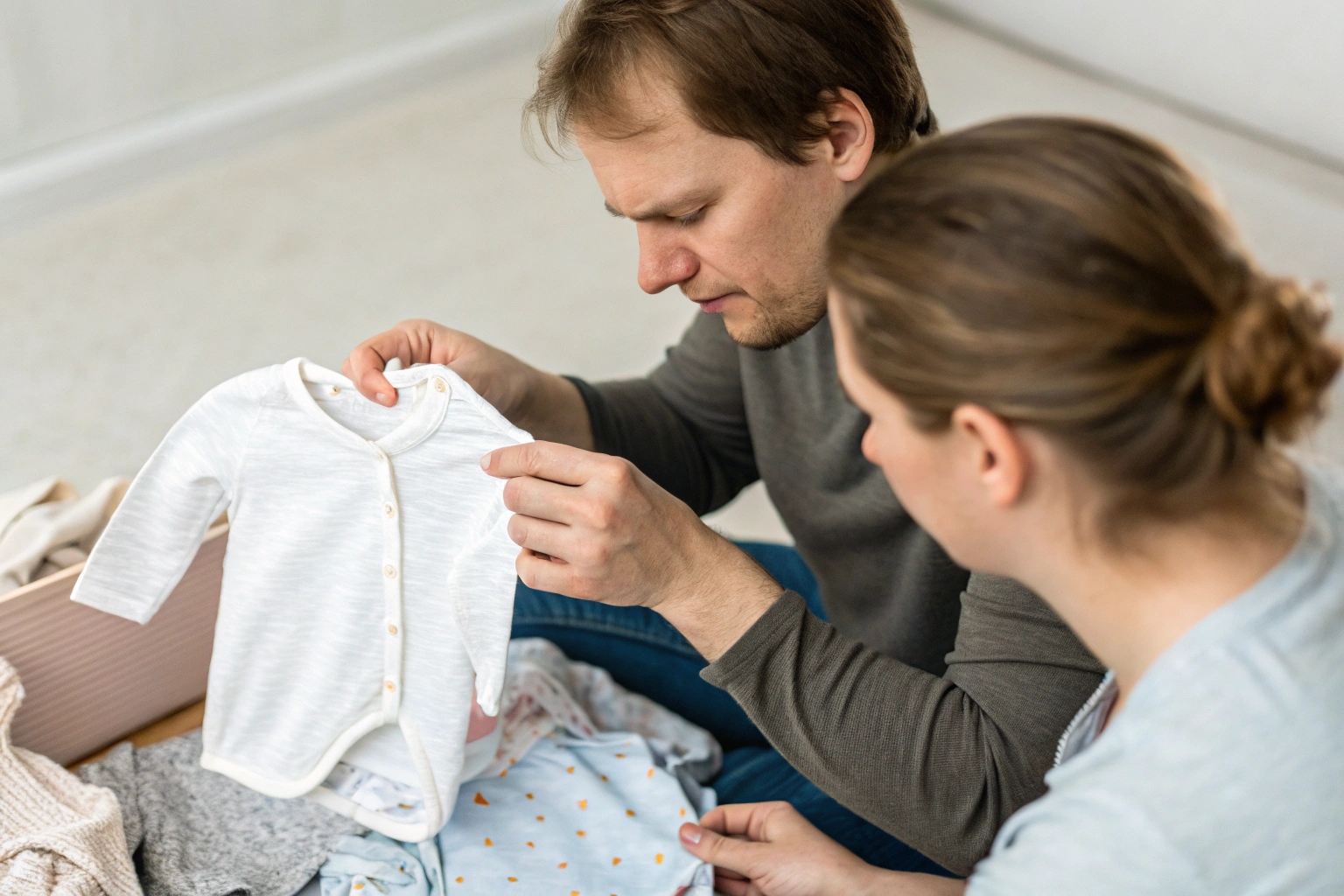Buying baby clothes should feel joyful—but for many parents, it’s filled with doubt. Is this outfit really safe? Will it fit? Will it last? It’s not just about the price—it’s about peace of mind.
Parents feel insecure about babywear when they’re unsure about fabric safety, sizing accuracy, product claims, and long-term quality after use.
Here’s what I’ve learned from listening to new parents and helping brands build trust—where doubts come from, and how to remove them one by one.
Are the Fabrics Safe for My Baby’s Skin?
Babies have delicate, sensitive skin. The wrong fabric can cause rashes, discomfort, or allergic reactions—and parents know that. But product pages don’t always tell the full story.
Parents worry about fabric safety because many babywear labels lack clear certification, fiber details, or transparency about chemical use.
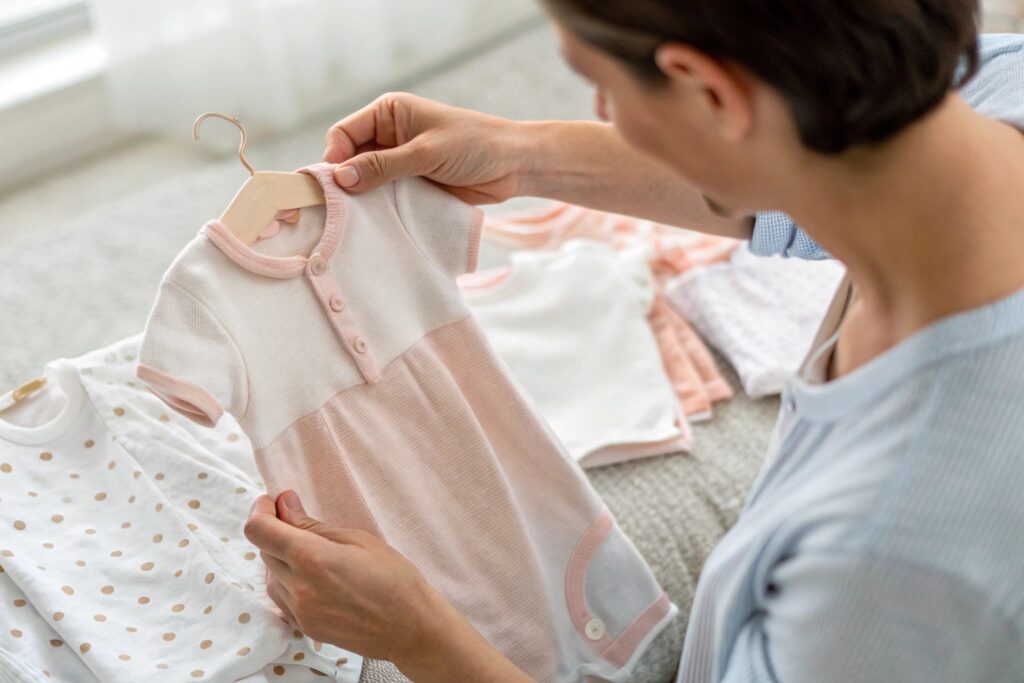
What makes a fabric truly safe for newborns and infants?
Safe babywear fabrics are:
- Soft and breathable (like cotton, bamboo, or modal)
- Free of harsh dyes or chemical finishes
- Certified by third parties (like OEKO-TEX® or GOTS)
But many clothes simply say “cotton” without clarifying if it’s organic, blended, or treated. That leaves parents wondering:
“Is this really safe for my baby’s skin—or just a marketing word?”
Here’s what I suggest every brand should list:
| Fabric Detail | Example Label |
|---|---|
| Fiber content | 95% Organic Cotton / 5% Spandex |
| Certification | OEKO-TEX® Standard 100 Certified |
| Dye safety | AZO-free dyes, baby-safe printing |
| Washing recommendation | Machine wash cold, no fabric softener |
What helps reassure parents instantly?
- Tags that say “certified safe for babies”
- Visible logos (GOTS, OEKO-TEX) with simple language like:
“Made with certified organic cotton, safe for newborn skin”
- Website pages explaining your fabric sourcing in plain terms
Trust grows with facts—not vague phrases.
How Can I Be Sure the Size Will Fit Right?
Sizing is the top reason for returns—and a major source of insecurity, especially for first-time parents. Baby sizes are confusing, inconsistent, and don’t match real baby growth.
Parents feel unsure about fit because sizing labels vary by brand, growth rates are unpredictable, and few stores explain fit clearly.
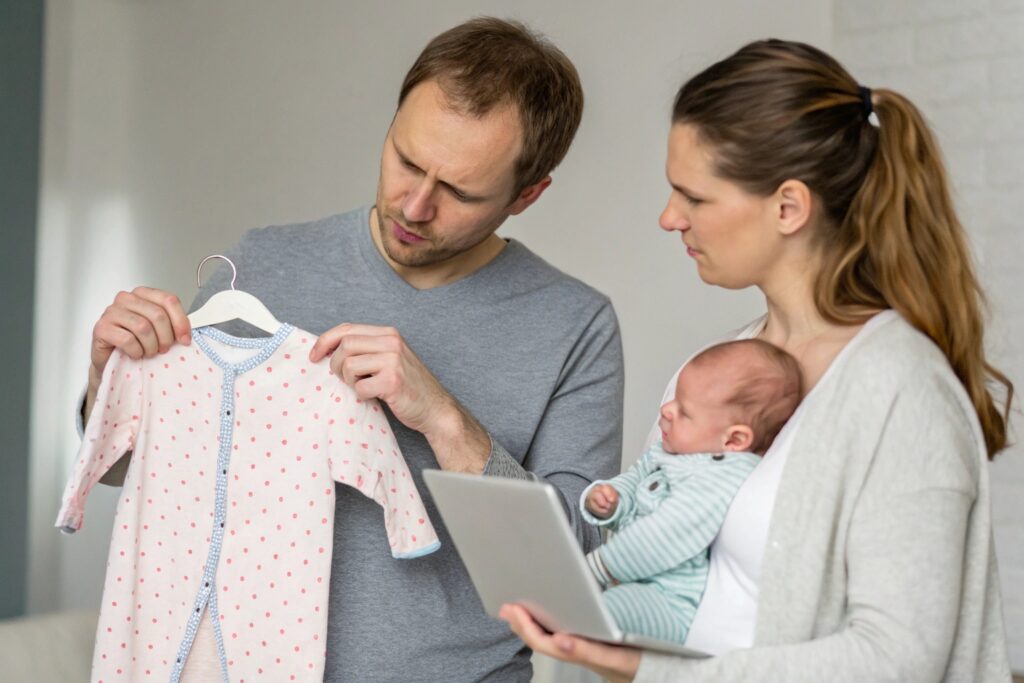
Why do parents hesitate before buying a size?
Because “0–3M” might not fit a 2-month-old. A chubby baby may need a bigger size, while a preemie needs smaller sizes that aren’t always available. Plus, many online stores don’t include weight or height guidance.
Common questions parents ask:
- “Will this fit over a diaper?”
- “Is this stretchy or tight-fitting?”
- “Should I size up for longer wear?”
What size guidance actually works?
Here’s what I recommend displaying:
| Label | Baby Height | Baby Weight | Fit Comment |
|---|---|---|---|
| 66 | 60–66 cm | 5–7 kg | Snug fit, stretchy fabric |
| 73 | 67–73 cm | 7–9 kg | Fits over cloth diapers |
| 80 | 74–80 cm | 9–11 kg | Slightly loose for layering |
Plus:
- Real baby model examples (“Baby is 5 months, 7.5 kg, wearing size 73”)
- Fit tags: “Runs small,” “Relaxed fit,” “Slim leg”
- Size quizzes (“What size fits my 6-month-old?”)
Confidence goes up when choices feel informed—not guessed.
Is This Brand Truly Organic and Non-Toxic?
Many babywear brands claim to be organic, sustainable, or toxin-free—but not all back it up with proof. Parents want to believe, but they also want verification.
Parents feel unsure about “organic” claims because some brands lack certification, use vague language, or greenwash their product pages.
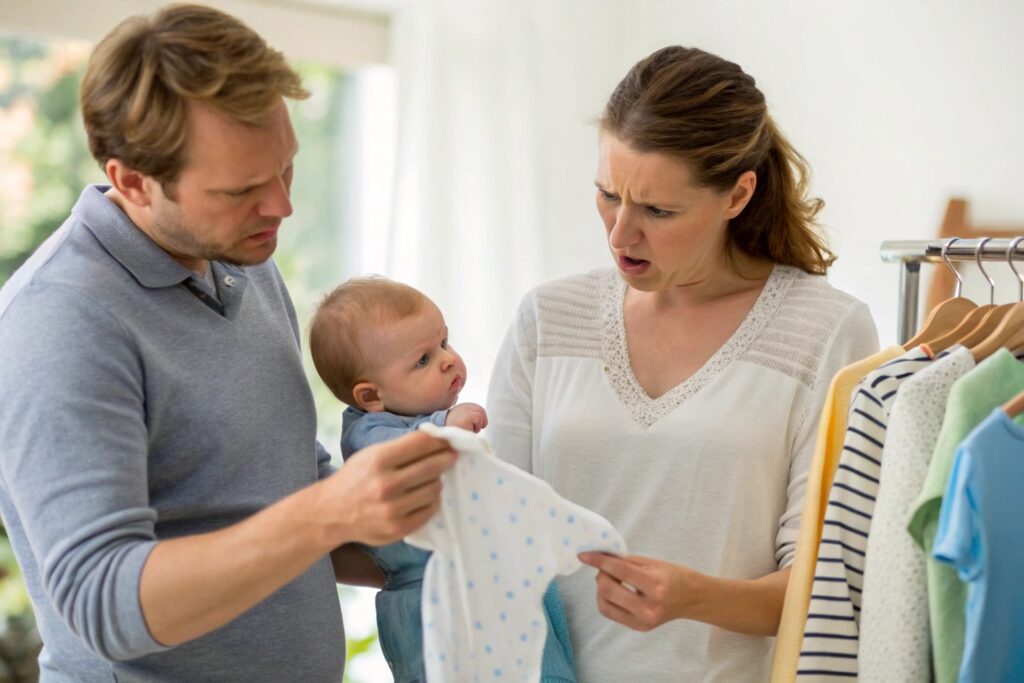
What makes a babywear brand truly credible?
Real credibility includes:
- GOTS Certification (for both fabric and production)
- OEKO-TEX Standard 100 (tests for harmful substances)
- Full ingredient transparency (no phthalates, AZO dyes, etc.)
Without this, phrases like “natural fabric” or “eco-friendly” feel hollow. I’ve had parents tell me they bought “organic” items only to find no tag, no label, and no real difference from regular clothes.
What should brands do to gain trust?
- Show certification logos clearly—on tags, site, packaging
- Write clear copy like:
“Certified by GOTS. Our fabric meets global organic standards from farm to factory.”
- Explain the difference between organic, sustainable, and non-toxic—in simple words
Trust isn’t just earned through marketing—it’s earned through clarity.
Why Do Some Baby Clothes Look Good but Wear Poorly?
Parents are tired of cute outfits that fade, shrink, or stretch out after two washes. Looks matter—but performance matters more.
Parents lose confidence when baby clothes look great online, but fall apart in real use—leading to regret, complaints, and lost loyalty.
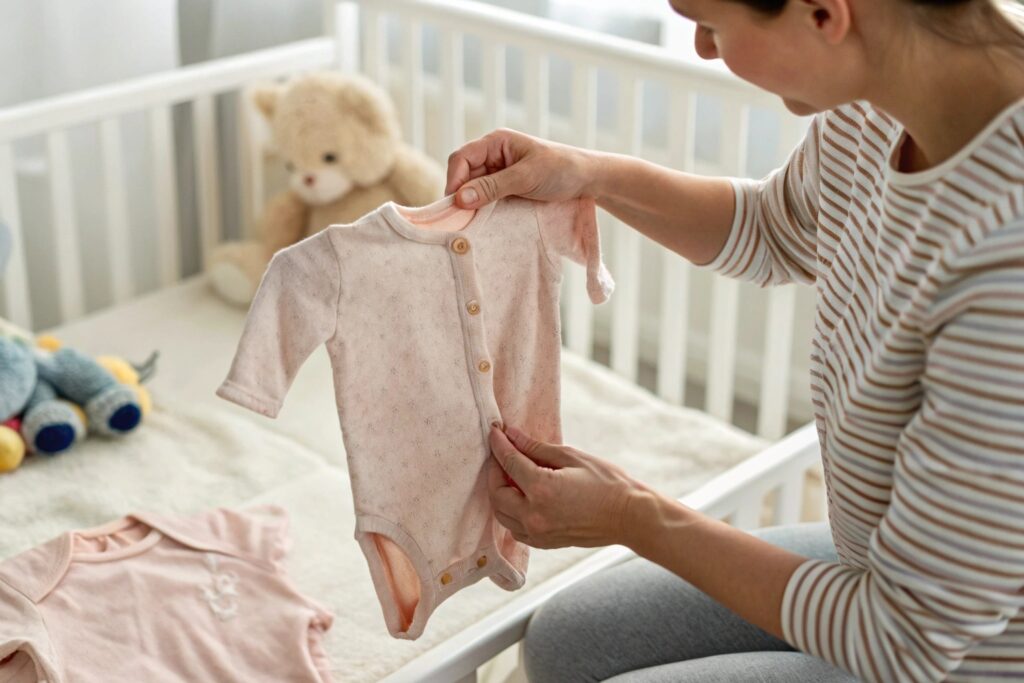
Why do good-looking baby clothes disappoint after a few wears?
- Cheap dyes fade quickly
- Loose stitching breaks under washing stress
- Fabric pills, stretches, or shrinks
- Prints crack or peel
These issues aren’t visible in photos. Parents only find out after laundering or dressing. That makes them feel misled.
How can brands prove their clothes last?
- Include close-up photos of stitching, seams, and inner tags
- Mention care results in product copy:
“Pre-washed to reduce shrinkage. Stays soft after 10+ washes.”
- Show videos of stretch, fabric thickness, and wear in motion
- Add reviews from parents saying:
“This romper still looks new after 3 months!”
Durability is a top concern—and a key to repeat purchases.
Conclusion
When brands address fabric safety, sizing clarity, truthful organic claims, and long-term quality, they replace parental doubt with trust. That trust turns into loyalty—and builds babywear brands that parents believe in.

